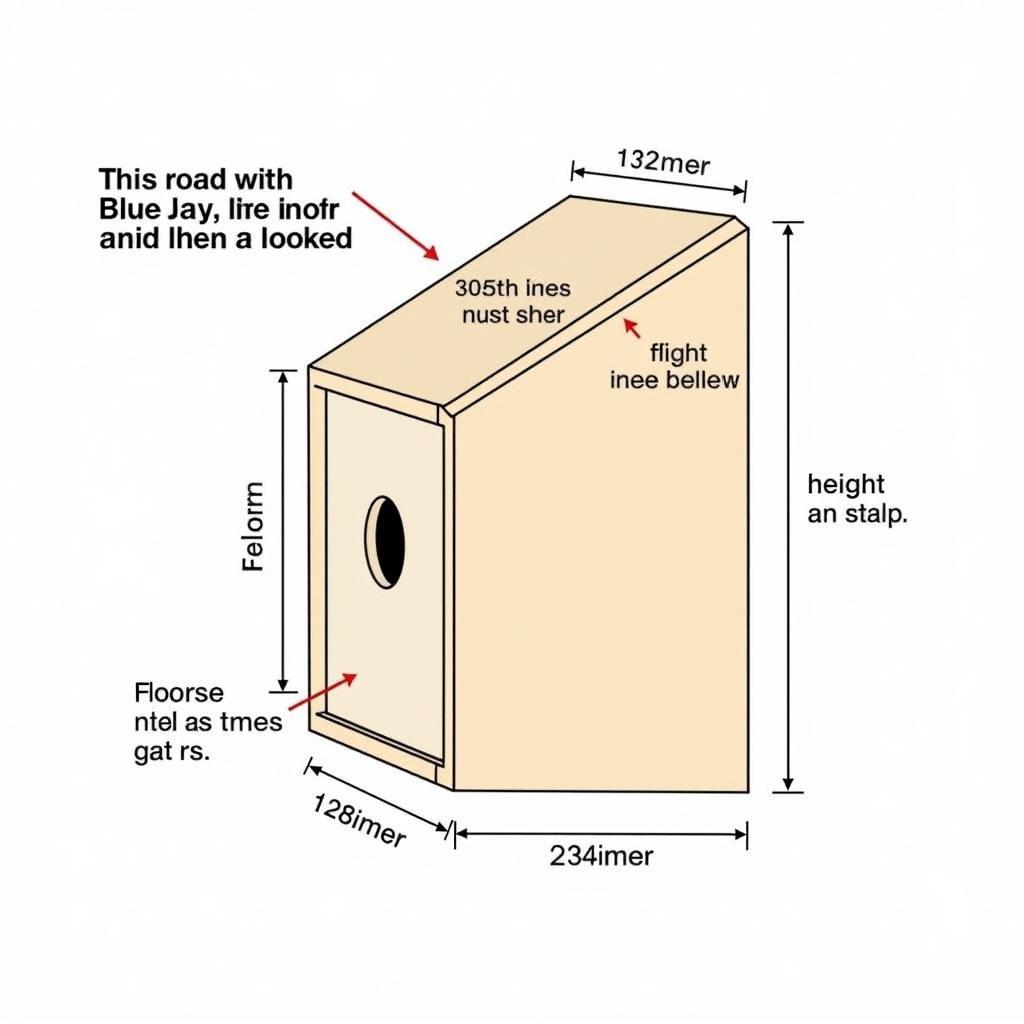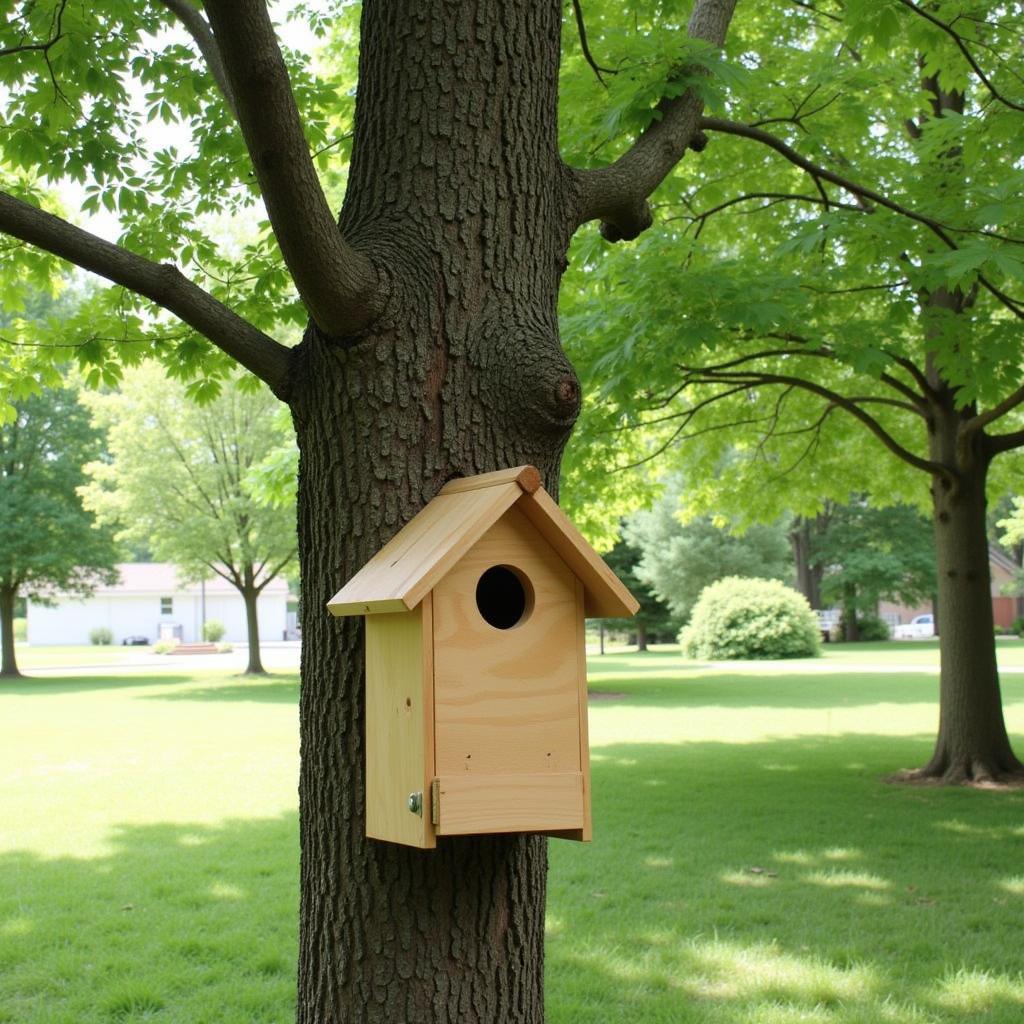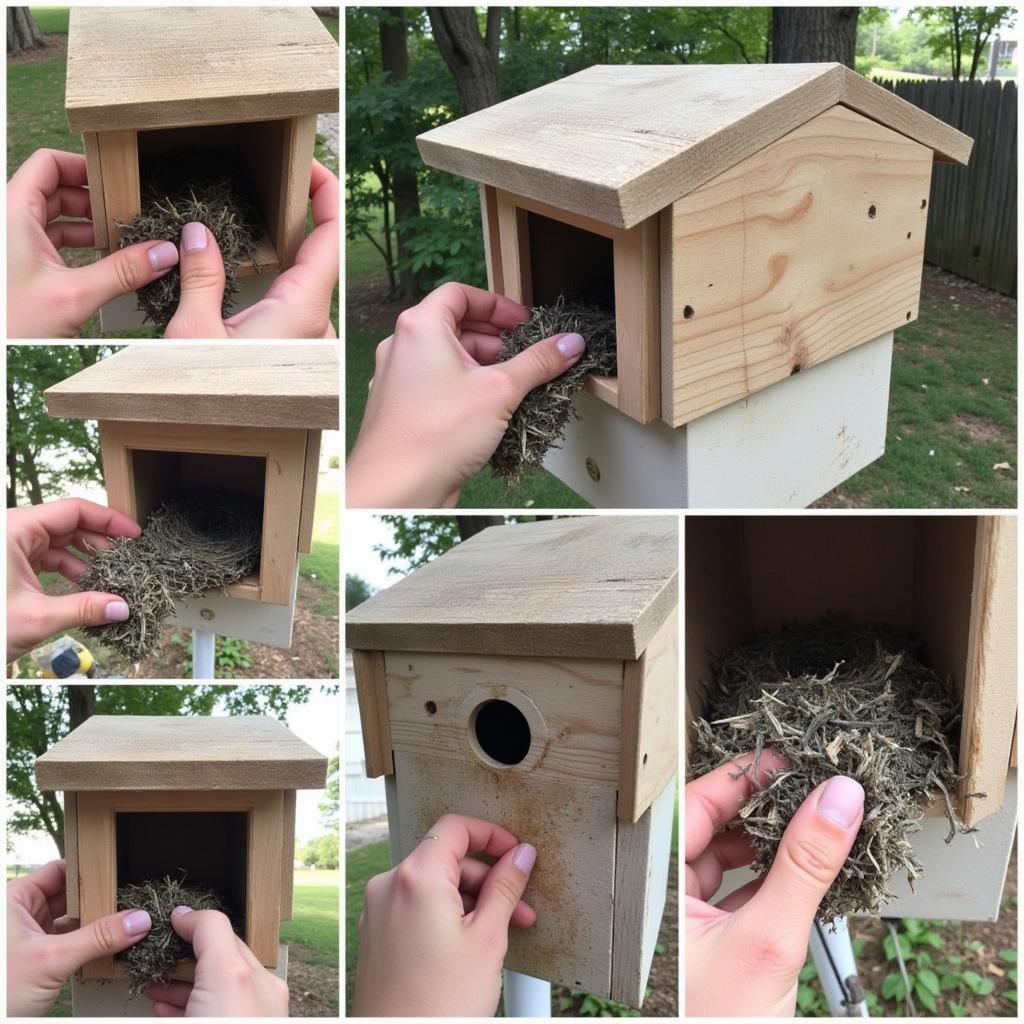Building the Perfect Blue Jay Nest Box: A Guide
October 15, 2024Attracting blue jays to your backyard is a treat, and providing a safe and inviting nest box can encourage them to stay and raise their young. While blue jays typically build their nests in trees, a well-placed and designed nest box can offer additional shelter and security, leading to successful breeding seasons.
Understanding Blue Jay Nesting Habits
Before you build or buy a Blue Jay Nest Box, it’s crucial to understand their natural nesting preferences. Blue jays prefer to nest in the crooks of trees, often selecting deciduous trees like oaks, maples, and hickory. They typically build their nests 10-25 feet above the ground, tucked away in a fork or branch offering concealment from predators.
Choosing the Right Blue Jay Nest Box
When selecting a nest box for blue jays, size, material, and placement are critical factors:
- Dimensions: Blue jays require a more spacious nest box compared to smaller songbirds. A floor size of 8 inches by 8 inches with a height of 10-12 inches is ideal.
- Entrance Hole: The entrance hole is vital to prevent larger predators from accessing the nest. An opening of 2.5-3 inches in diameter is perfect for blue jays.
- Material: Untreated wood like cedar, pine, or fir is recommended for its durability and natural insulation properties. Avoid using treated lumber, as the chemicals can be harmful to birds.
- Drainage and Ventilation: Ensure the nest box has drainage holes at the bottom to prevent water accumulation and ventilation holes near the top to allow for air circulation.
 Blue Jay Nest Box Dimensions
Blue Jay Nest Box Dimensions
Placing Your Blue Jay Nest Box
Proper placement is crucial to attract blue jays to your nest box. Consider the following:
- Height: Mount the nest box 6-10 feet high on a sturdy tree trunk or post.
- Location: Choose a location that provides some shade during the hottest part of the day. Avoid placing the nest box in direct sunlight.
- Protection: Face the nest box away from prevailing winds and ensure it’s secure and stable to withstand weather conditions.
- Privacy: Place the nest box in a quiet area of your yard, away from high-traffic areas and potential disturbances.
 Blue Jay Nest Box Placement
Blue Jay Nest Box Placement
Attracting Blue Jays to Your Nest Box
While providing a suitable nest box is essential, attracting blue jays also involves creating a bird-friendly environment:
- Food Sources: Offer blue jay favorites like peanuts, sunflower seeds, and suet cakes in platform feeders or tray feeders.
- Water Source: Provide a clean water source, such as a birdbath or shallow dish, for drinking and bathing.
- Natural Habitat: Plant native trees and shrubs that offer food and shelter to blue jays and other backyard birds.
Maintaining Your Blue Jay Nest Box
Regular maintenance of the nest box is crucial for the health and safety of the birds:
- Cleaning: Clean out the nest box after each breeding season, typically in the late summer or early fall. Remove old nesting material and debris.
- Inspection: Inspect the nest box for any damage or wear and tear. Repair or replace any damaged parts.
- Monitoring: Observe the nest box from a distance during the breeding season to see if it’s being used. Avoid disturbing the birds.
 Blue Jay Nest Box Maintenance
Blue Jay Nest Box Maintenance
Conclusion
Building or providing a blue jay nest box can be a rewarding experience, offering a safe haven for these intelligent and beautiful birds. By understanding their nesting preferences, selecting the right nest box, and placing it thoughtfully in your yard, you can increase the chances of attracting blue jays and enjoying their vibrant presence for years to come. Remember, creating a bird-friendly environment goes beyond just providing shelter—offering food, water, and natural habitat is key to attracting and supporting a thriving blue jay population.